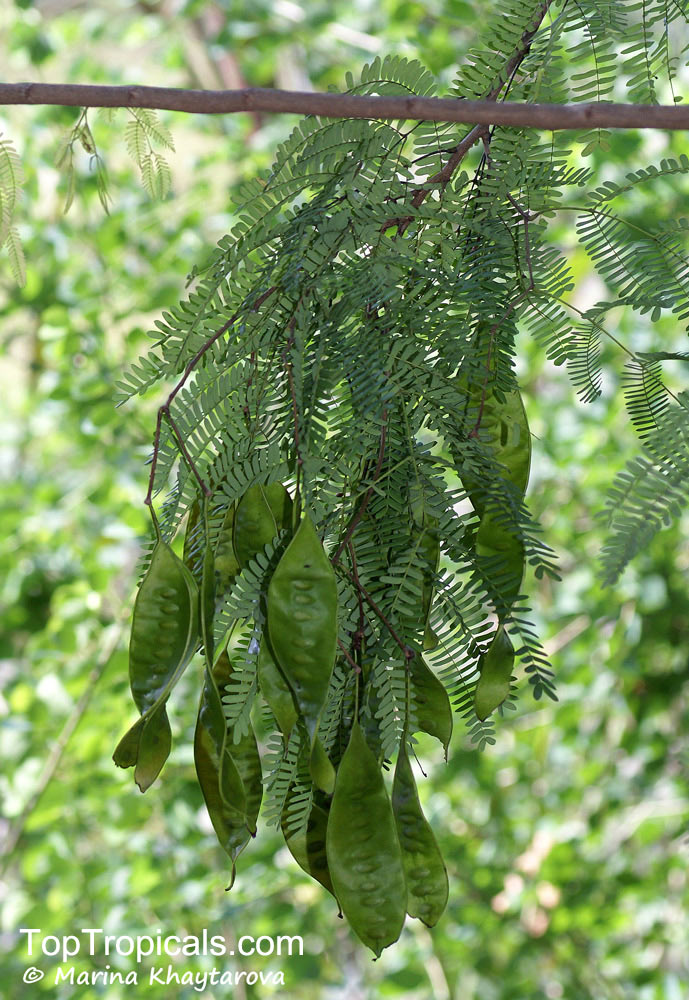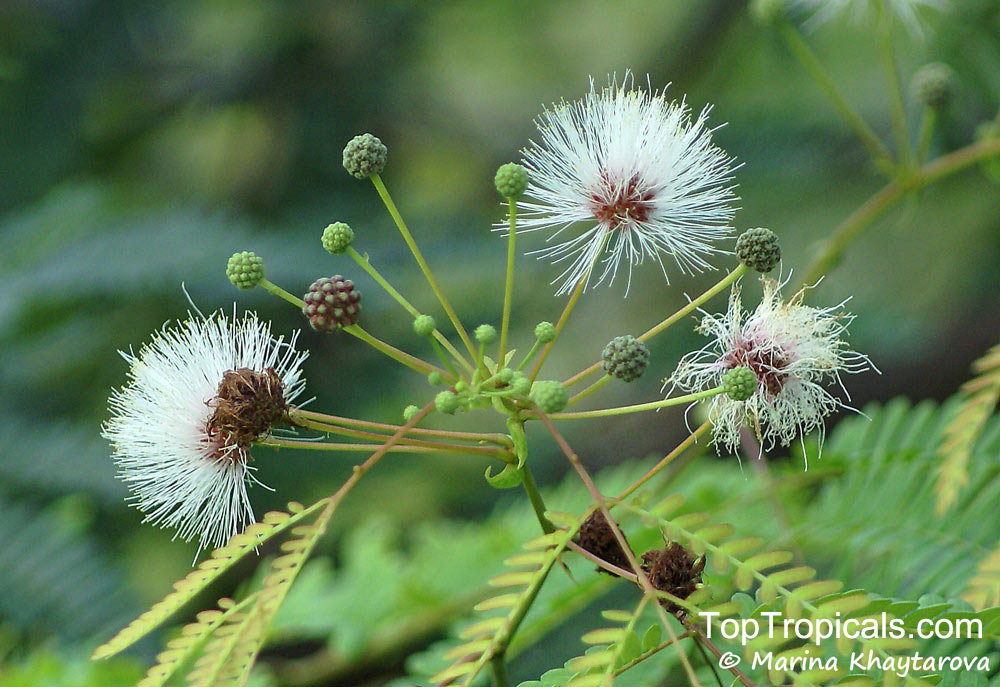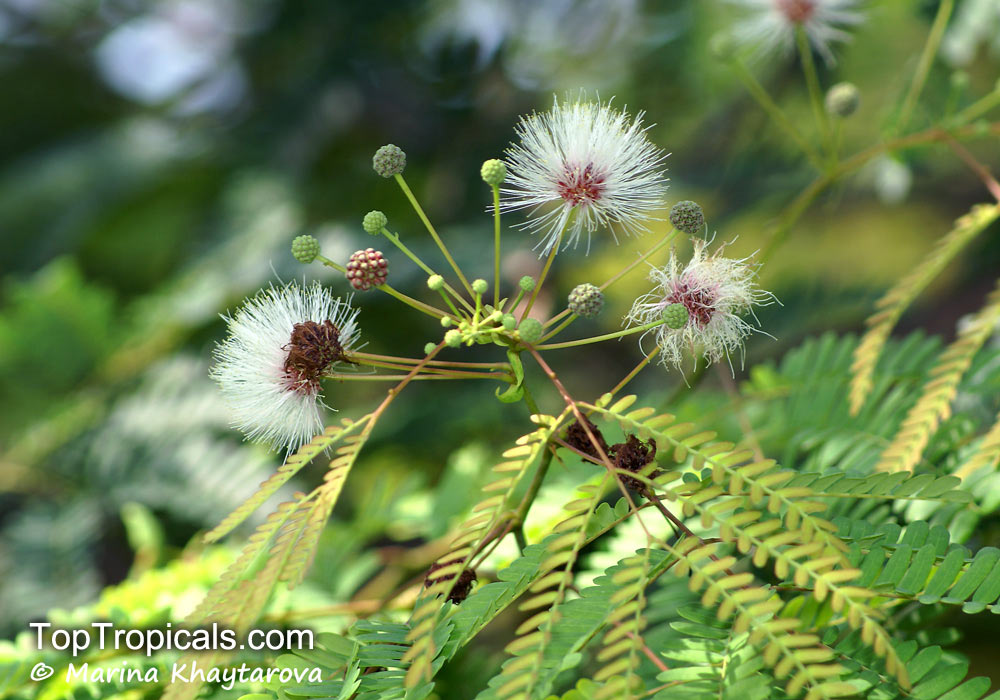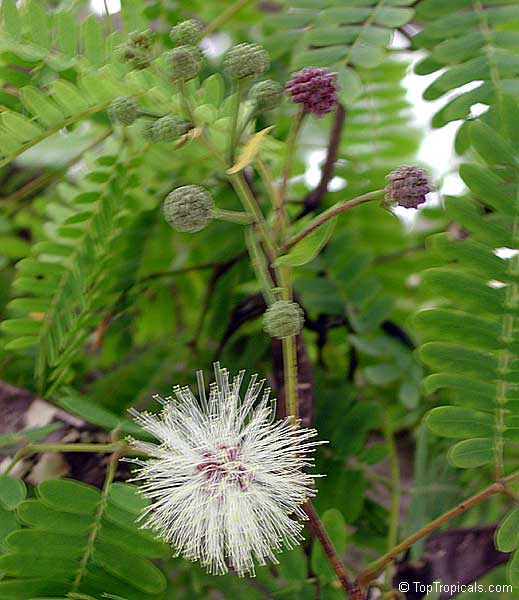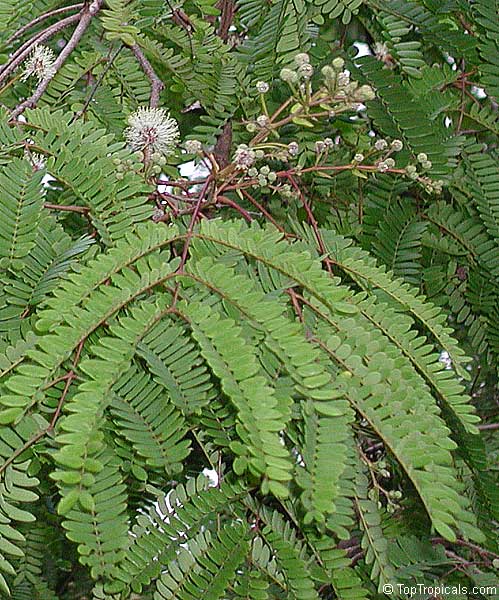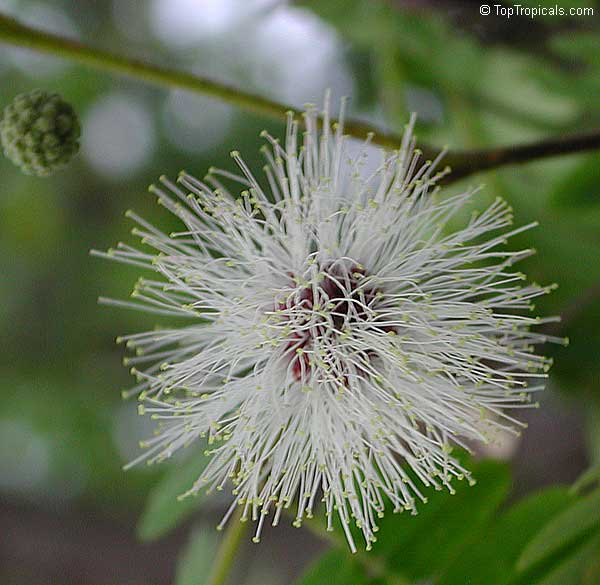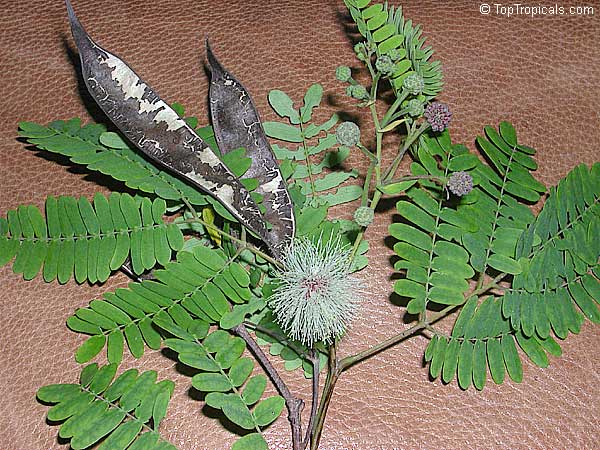Lysiloma - Search results
Top Tropicals Plant Encyclopedia
| Number of plants found: 2 |
Botanical names: Lysiloma latisiliquum, Acacia bahamensis, Acacia formosa, Acacia latisiliqua, Leucaena latisiliqua, Lysiloma bahamensis, Lysiloma latisiliqua, Mimosa latisiliqua
Common names: Bahamas Lysiloma, Candelon, False Tamarind, Wild Tamarind
Family: Fabaceae
Subfamily: Mimosoideae
Origin: Central America








This tree is a popular nesting site for several native songbirds. Lysiloma latisiliquum, also known as Bahamas Lysiloma, is a native of Central America. It is a fast-growing, deciduous tree or shrub species which typically varies in size from a small tree, growing 10-20 ft tall, to a larger one of 20 ft or more. It is also salt tolerant and can be grown at seaside locations.
The tree develops off-white or white flowers in spring and summer. It has an open crown with drooping branches. Lysiloma latisiliquum prefers full sun to partial shade and requires moderate water, though it is fairly drought tolerant when established.
In order to enjoy the best results, it is important to grow Lysiloma latisiliquum in well-drained soils in USDA Zone 9-11. Plant maintenance includes removing competing vegetation and providing water during the dry season. Proper mulching also helps to keep the soil moist and provides nutrients. In colder climates, this plant should be grown in deep pots, repotted annually and moved indoors during winter.
This is a very attractive and popular species that will add a special flair to any landscape. In addition to providing extraordinary beauty, Lysiloma latisiliquum is also a great choice for attracting birds to your garden.
Botanical names: Lysiloma microphylla, Lysiloma watsonii
Common name: Feather Bush
Family: Fabaceae
Subfamily: Mimosoideae
Origin: Arizona Rincon Mountains, Tucson in Sonoran desert







Lysiloma microphylla (Feather Bush) is a large shrub or small tree that can reach heights of 5-10 ft tall or 10-20 ft tall depending on the setting. Native to the Rincon Mountains in Tucson, Arizona in the Sonoran desert, it is an excellent choice for hot, dry climates. A semi-evergreen shrub, it is drought and cold deciduous and will drop leaves briefly in the spring. The bark is rough and gray in color, and the leaves are pinnately compound. Flower heads are small and a pale cream or off-white color and attract butterflies, hummingbirds, and other pollinators.
In USDA Zone 9-11, the Lysiloma microphylla is a fairly easy plant to grow, preferring full sun and moderate water. The mature plant is cold hardy to at least 30 degrees Fahrenheit for a short time, and should be planted in an area that offers protection from the wind. Pruning is necessary to form the desired shape, and the shrub will grow quite rapidly with sufficient moisture.
In colder climates, the Lysiloma microphylla can be grown in a pot as long as it is kept above freezing. During winter months, the pot should be placed in a sheltered area under a tree canopy, or if grown outside, the plant should be heavily mulched to help the root system keep warm. Pruning should also be limited to the summer months after flowering season. The shrub should be watered regularly throughout the summer. Careful attention should be paid to the soil moisture and water requirements as this can affect the overall health and vigor of the plant.
Nothing found

